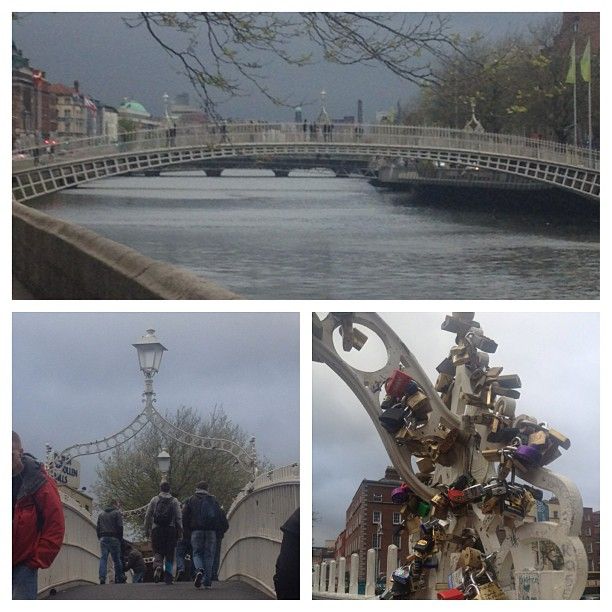While living in Dublin, I have regularly commuted daily over the River Liffey. During this commute, I have been taking notice of a bridge that was unlike any other in design. As I walked home from school last Tuesday, I decided to cross the River Liffey by way of that particular bridge. It is made from white cast iron, with three archways to cross under, and steps leading up to and down from the base of the bridge. While crossing, I noticed that the archways were covered in locks that had names and dates written on them.
The bridge is the Wellington Bridge, but is more commonly referred to as the Ha’penny Bridge. It is called this because the toll to cross was a ha’penny. It was built in 1816, and was commissioned by William Walsh, a Liffey ferry owner. Turnstiles were placed at either end of the bridge when the toll was still collected, but have since been removed. It was the first pedestrian bridge over the Liffey. It is also often used as a symbol of Dublin.
The part of the Ha’penny Bridge that intrigued me the most was the locks on the arches. Upon further investigation, I learned that these are called love locks. They started appearing in Europe in the early 2000’s, and are placed in random locations in many major cities. They are often attached to a gates, fences, and bridges by sweethearts to symbolize their everlasting love.
Upon learning about these locks, I knew it would be the best way to commemorate my time in Dublin. A few days after my initial crossing of the bridge, I decided to go put a lock on the Ha’penny Bridge. I went to the store, got a lock, and wrote TU Dublin 2013 on it. I then took it to the bridge, and placed the lock on the middle arch. I then threw the key in the River Liffey, as per tradition with the love padlocks.
I felt a rush of exhilaration when I was putting the lock on the bridge. While it is legal, the government cuts off many locks annually. Dublin has quickly become a place that I have fallen in love with. When I placed the lock on Ha’penny Bridge, I was locking my heart to the city forever. I hope that one-day, if I have to opportunity to return, my lock will still on the bridge. To me, the placing of the lock represents a bond that I will constantly share with this city. It is rare that one finds a foreign city where they feel completely at home, and for me, Dublin is that city. James Joyce best puts my feelings into perspective when he says “When I die Dublin will be written in my heart.” By leaving a lock here, I have also left a piece of my heart.

